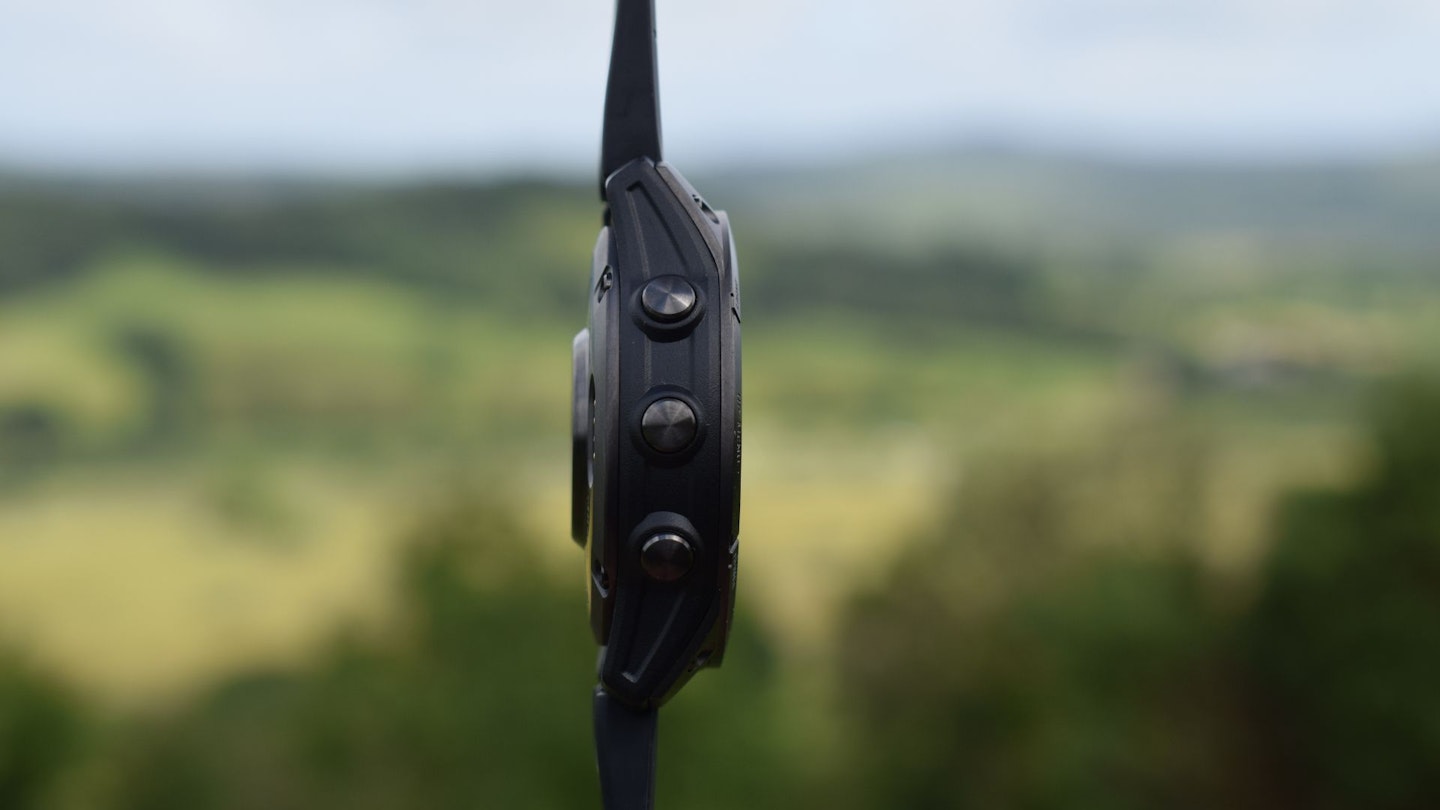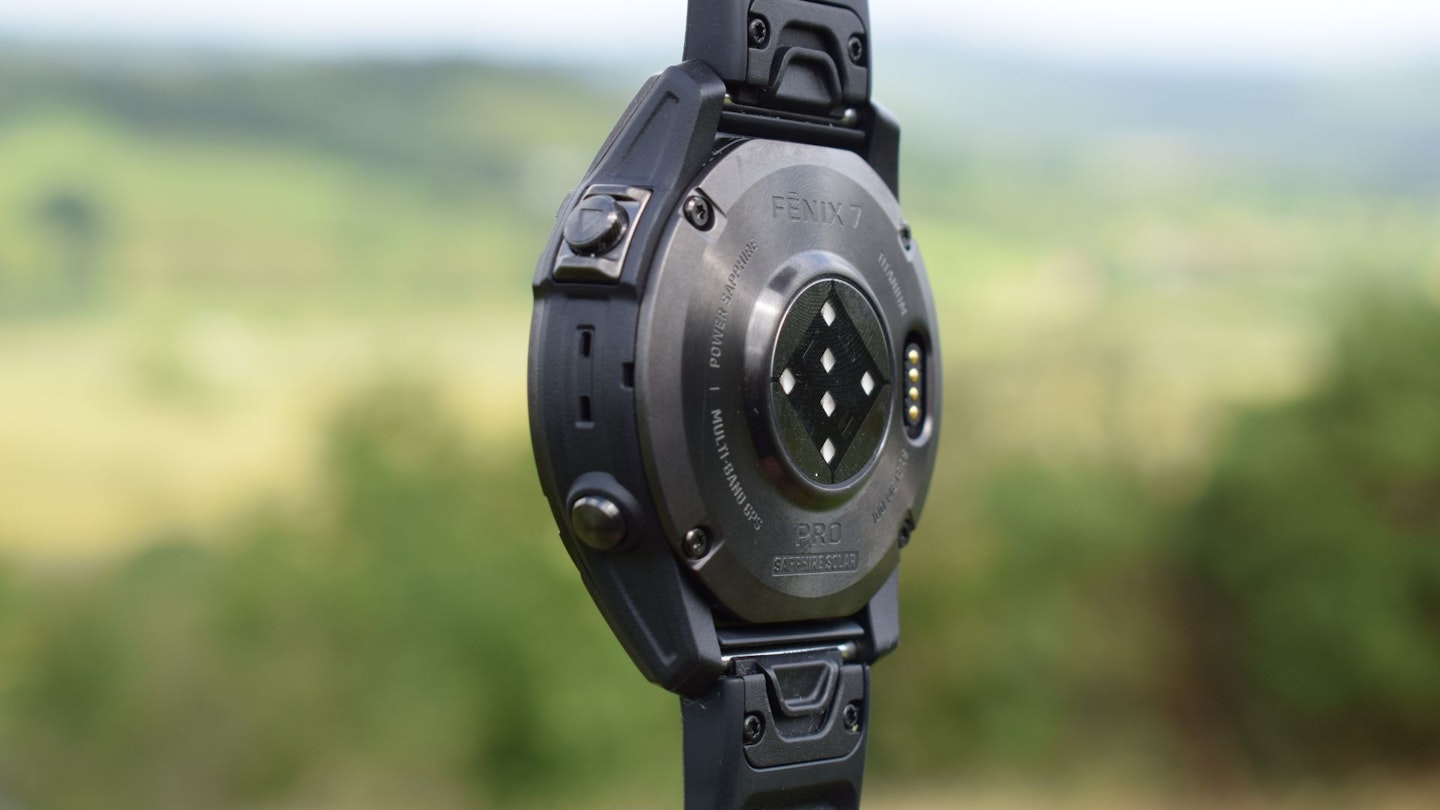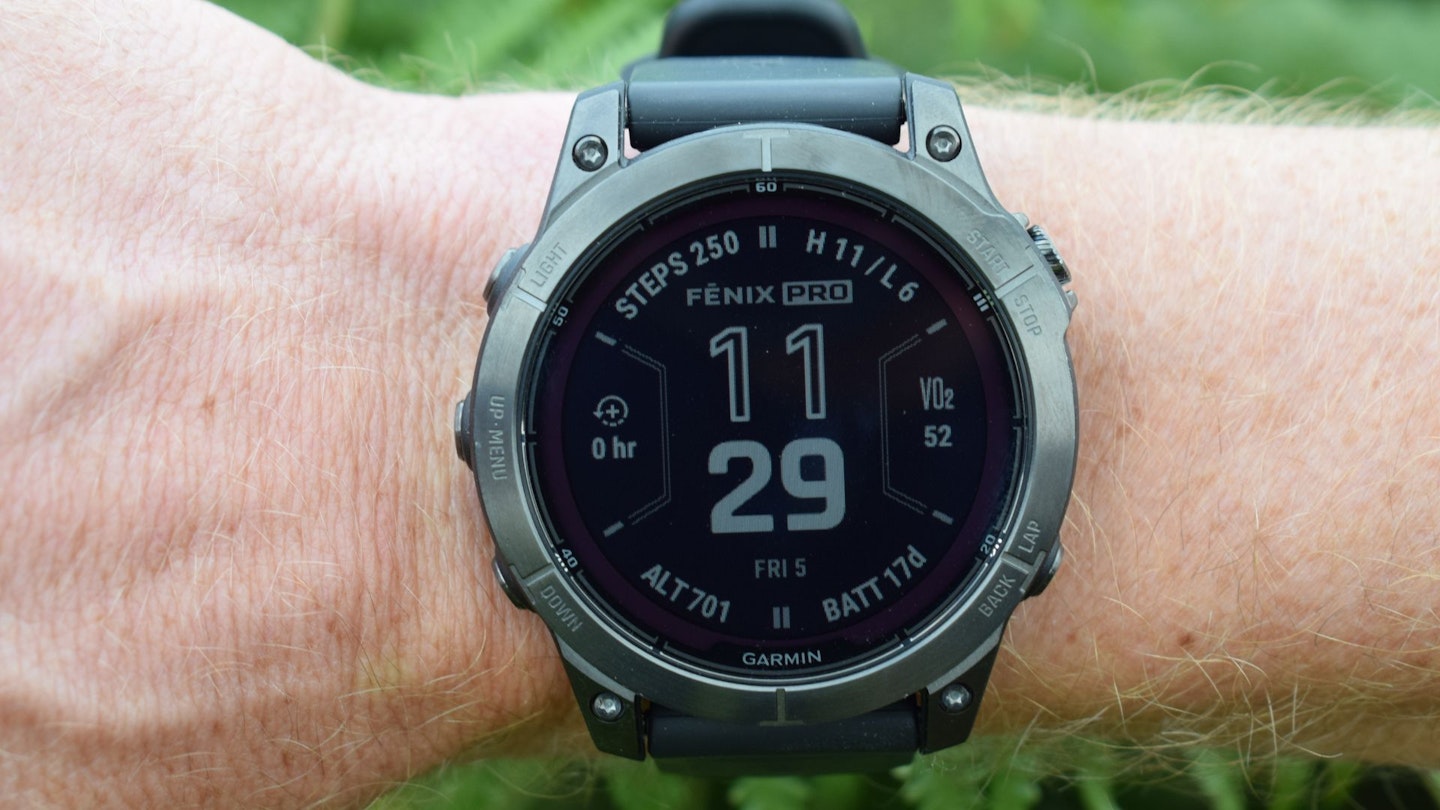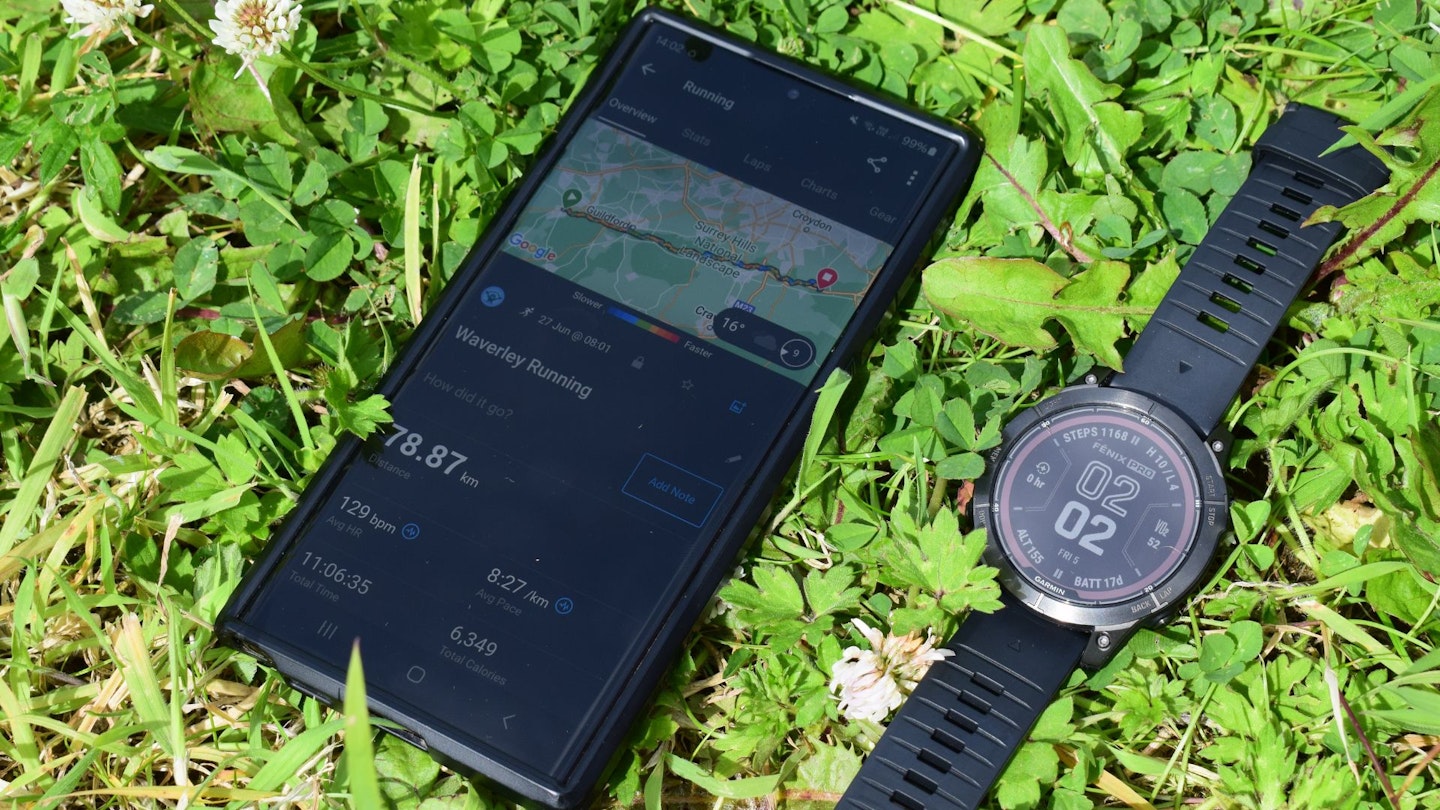Now in its seventh generation, Fenix (styled fēnix, pronounced as phoenix) is Garmin’s flagship range of GPS running watches – and one that has won a vast array of industry awards over the past decade or so since its first release in 2012. But is it worth the hype?
Online reviewers have a tendency to lose their minds over every new Fenix release, going overboard with excessive praise and acclaim, as if each new generation is a game-changing innovation akin to the invention of the Apple iPhone. They need to calm down. Yes, the Fenix is a top-tier, premium sports watch with loads of excellent features. But it’s not perfect, either. Here’s our honest assessment.
www.johnlewis.com
Pros
- Excellent mapping
- Solid battery life
- All-round performance
- Premium design
- Impressive build quality
Cons
- Very expensive
- Underwhelming screen for the price
- Slightly heavy, chunky shape
| Weight | 75g |
| Battery life | Up to 57 hours |
| Waterproof | 10ATM |
| Materials | Power sapphire |
| Screen size | 260 x 260 pixels, 1.3” |
Let’s start with the negatives. The Fenix is very, very expensive (£739.99), and arguably over-priced and over-kill for some runners. Remember, at that price bracket, you could buy three Coros Pace 3s and still have £83 left in your wallet. It’s also quite heavy (75g) and chunky, which means it isn’t the most comfy, stable or streamlined on the wrist. And finally, for such a lofty price-tag, the 260 x 260 resolution colour screen does not have the wow factor. It’s ok, but not particularly bright or crisp, and for £740 it seems a tad stingy of Garmin to deny you some vivid AMOLED clarity (although the omission helps massively boost all-round battery performance).
But, having said all of that, there are loads of positives with the Fenix. It’s undoubtedly a premium, high-end sports watch for the serious runner. It delivers excellent performance across all of the main metrics – battery life, GPS accuracy, navigation, design and features – and, if your pockets are deep enough, it’s a safe bet that won’t let you down. Indeed, like most users, you’ll probably fall in love with it in the end.
I used the Garmin Fenix 7 Pro on a three-day run of the entire North Downs Way national trail, clocking up 79km on day one, 73km on day two and 52km on day three, using its excellent mapping functions to navigate, as well as track my running performance. It worked like a dream – I was very impressed and couldn’t really fault it. The screen was a little underwhelming (more on that later), but that’s probably just nit-picking. The Fenix 7 Pro hit the mark, performed near-faultlessly and didn’t let me down, so maybe it’s worth the pricey outlay, after all?
Shop this product
Design and Screen
The design of the Fenix 7 Pro is pretty standard, but it’s good-looking and the set-up is a proven approach that works well. The titanium bezel (a fibre-reinforced polymer with titanium rear cover) feels classy and well-made, the silicone strap is comfy and does its job fine, and the 1.3” screen is wide and made from power sapphire glass. You get three buttons on the left-hand side of the bezel and two on the right. There is no rotating crown, but with five buttons you can easily navigate through Garmin’s user interface.
Each button is named with engraved writing (light, up/menu, down, start/stop, back/lap), which is super useful. Many other watches don’t do this and you can often find yourself forgetting which button does what, and ultimately end up pressing the wrong one. Garmin’s user interface is quite basic and, perhaps, feels like it could do with a 2024 update. But it works pretty well, isn’t unnecessarily complicated and can be nicely customised to your personal needs.
The screen of the Fenix 7 Pro is 1.3” wide. It is colour, touchscreen compatible and the Power Sapphire lens features solar charging. It is a sunlight-visible, transflective memory-in-pixel (MIP) screen, with a 260 x 260 pixels resolution. As mentioned above, this is a decent screen – it still displays maps pretty well, and it strikes a nice balance between battery life and display clarity. But, for £740, it’s difficult not to be a little disappointed by this screen. It’s slightly narrower by a few millimetres than some competitors, the resolution is average at best, and it lacks sharpness, clarity and brightness. If you put it next to an AMOLED screen, the Fenix 7 Pro display looks out-dated and poor.
Shop this product
Having said this, many runners may prefer the improved battery performance you get from a non-AMOLED screen, and indeed may see the vivid brightness of an AMOLED screen as an unnecessary luxury that is quite “lifestyle-y”, rather than useful to serious runners.
During my run of the North Downs Way, I found the Fenix 7 Pro display absolutely fine for, perhaps, 80% or 90% of the time, with maps easy enough to follow. But on a few occasions, particularly in darker conditions in woodland, the display was quite dull and I had to press the light button to bring it to life.
GPS Accuracy
Shop this product
As mentioned above, I wore the Garmin Fenix 7 Pro on a three-day, 204km run of the North Downs Way national trail – a long-distance route which included a lot of time under thick tree cover.
The Fenix 7 Pro coped with all of this admirably. I never had any problems with GPS accuracy. The watch tracked each of my three runs accurately and precisely, it locked to GPS signal quickly before each activity, and I never noticed the GPS trace jolting off on a tangent.
This accuracy was probably achieved thanks to the Fenix 7 Pro’s access to dual-frequency (multi-band) GPS, which you don’t get with Garmin’s cheaper models, as well as the use of three core satellite networks – GPS, GLONASS and Galileo.
Despite the top-tier price-tag, you don’t get access to the QZSS or Beidou satellite systems with Garmin. We asked the brand’s PR representatives about this omission and they told us that Garmin’s use of GPS, GLONASS and Galileo was “the industry standard” with “global coverage”. In truth, we couldn’t notice any drop-off of in activity recording accuracy with the lack of QZSS or Beidou, so we’d suggest this probably isn’t anything to be too concerned about.
Shop this product
Weight and Size

The Garmin Fenix 7 Pro Sapphire Solar 47mm weighs 75g on our scales, including the black silicone band and the carbon grey DLC titanium bezel version. This is the lightest watch we’ve tested that still fits into the “chunkily-thick” category of fully-featured GPS watches. The Garmin Fenix 7 Pro is 4g lighter than the Polar Grit X2 Pro, 8g lighter than the Suunto Race and 13g lighter than the Coros Vertix 2S, for example.
These marginal weight savings are mostly courtesy of the titanium bezel (titanium is lighter than steel), but naturally this comes at a higher price point. Also, it’s worth noting that if you were to buy the titanium versions of the Suunto Race (69g, £479) and Polar Grit X2 Pro (64g, £749), this would be a fairer like-for-like comparison, and indeed the Fenix might not compare as favourably.
For comparison, the Fenix 7 Pro is also far heftier than ultralight watches we’ve tested. It’s 21g heavier than the Garmin Instinct Solar 2 and 36g heavier than the Coros Pace 3.
Shop this product

The Fenix 7 Pro is quite a wide and thick watch. The bezel size is 47x47x14.5mm. This is marginally smaller overall than the Suunto Race and Polar Grit X2 Pro, but in practice my wrists certainly aren’t sensitive enough to notice the difference of a millimetre here or there – they all feel quite similar. For some runners, the Fenix 7 Pro will feel a tad too chunky, thick and unwieldy on the wrist, with all-day comfort levels compromised. There’s a chance it may feel a little unstable and “bouncy” on the wrist, particularly at faster speeds with a dynamic arm swing.
But other runners may not be bothered by this at all. It’s difficult to be objective and precise when comparing very similar watches, but we’d perhaps suggest the Fenix 7 Pro is ever-so-slightly comfier in-use than the Suunto Race and Polar Grit X2 Pro, but you may feel differently.
Shop this product
Battery Life

The Garmin Fenix 7 Pro has excellent all-round battery life. Garmin state the following official stats: 18 days in smartwatch mode (22 days with solar); 57 hours using GPS network only (73 hours with solar); 40 hours using GPS, GLONASS and Galileo (48 hours with solar, only 10 hours with music); and 23 hours using GPS, GLONASS and Galileo with dual-frequency multi-band (26 hours with solar). You also get two battery saving modes while still using GPS. In max battery GPS mode, you get up to 136 hours (289 hours with solar) and in expedition GPS mode you get 40 days (74 days with solar) – although with both of these options GPS accuracy will be significantly reduced.

Shop this product
It’s worth noting that the battery boosts quoted above for solar charging assume the following: all-day wear with 3 hours per day outside in 50,000 lux conditions. This is optimistic for the UK’s mountains. Of course you might get lucky, but don’t rely on always getting this uplift. Our overall view is that solar charging is a little gimmicky for UK-based adventures, but – of course – on sunnier days you might eke out a little extra juice from the battery.
All in all, 23-40 hours of battery life in full GPS modes is pretty impressive, and will provide more than enough juice for most running adventures. During my North Downs Way run I was impressed with the battery life. For example, on day two I ran 73.22km, in 10 hours and 46 minutes, with a very accurate GPS trace, and this only drained the battery from 100% to 72%, so you can certainly go long and far with the Fenix 7 Pro without needing to charge.
Water-Resistance
If you want to wear your smartwatch in the bath or shower, or keep it on when you jump in Lake Windermere after a hot’n’sweaty trail run, or use it to track your swims at the local leisure centre, then you’re good to go with the Garmin Fenix 7 Pro. It has a 10ATM rating, which means it can withstand pressures equivalent to a depth of 100 metres under water.
Shop this product
Navigation and Mapping
Using maps and navigating with the Garmin Fenix 7 Pro is easy and intuitive, and works excellently – I was very impressed with its performance in this field. The Fenix 7 Pro comes pre-loaded with topographical maps at no extra cost, with coloured detailing, clear contours and good all-round features displayed such as path networks, settlements, road systems, railways stations and much more. The maps are not as detailed as an Ordnance Survey map, for example, but they are very good. I found them superior to some other watch brand’s in-house mapping.
I used the Fenix 7 Pro to navigate myself for 204km along the North Downs Way. I pre-loaded the GPX route to my watch via the Garmin Connect app, and then loaded it each morning as I clicked start for my daily run. I could then toggle between screens, adjusting between the normal displays of running stats (speed, distance, time etc) to the mapping screens.
The map page would show a lined trace of my movements, as well as the plotted route ahead. Little arrows would advise me that the next turn was left or right, for example, and if I ever veered off course the watch beeped and showed me how to get back on track. I could easily zoom in and out of the map, as required, and other screen pages displayed useful info such as elevation profile and the distance to my destination. It all worked seamlessly and was impressive – definitely recommended.
The only downside was the Fenix 7 Pro screen. While the maps were coloured and quite clear, the memory-in-pixel screen only offered a low resolution, and was nowhere near as crisp and vivid as an AMOLED screen. Hence, on occasion, the maps seemed a bit dull and difficult to make out.
Shop this product
Running: Training, Coaching, Heart Rate and App

The Garmin Fenix 7 Pro really excels as a running watch. In conjunction with the Garmin Connect app, you can deep-dive into a myriad of geeky stats and metrics to your heart’s content. Everything you could possibly want to see or know will be at your fingertips, from cadence and stride length to max heart rate, anaerobic load, average power, VO2 max and so much more. For analysing and improving your running performance, no stone is left unturned with Garmin.
Some features we particularly liked included Hill Score (a measure of your uphill performance), Endurance Score (a measure of your ability to sustain prolonged efforts) and Garmin’s PacePro technology (a system for keeping you on track for a specific time goal or PB, including clever adjustments to elevation). But, of course, there might be other features you’ll end up loving – there’s so much to discover with the Fenix 7 Pro.
Other Features
You get a thousand and one other features with the all-singing, all-dancing Fenix Pro 7, everything from 32GB of storage and Spotify integration to Garmin Pay contactless payments, a sleep coach and stress tracking. There’s even a stocks tracker (huh?) and a jet lag advisor (eh?), so Garmin has gone full throttle on the features, many of which seem rather random. The brand also makes a big deal about the Fenix 7 Pro’s in-built LED flashlight. We found this surplus to requirements and not that useful, but some runners may find it handy.
Shop this product
Verdict
A top-tier, gold standard GPS smartwatch with excellent features and a superb reputation – but the screen should be better at this price-point
How we tested

The tester for the Garmin Fenix 7 was James Forrest, certified mad adventurer who'll climb every mountain, and ford every stream until he's found his dream. James has years of experience as a freelance outdoors writer, and always gives his gear a good old thrashing to bring you only the very best recommendations. He tested the Fenix 7 over 204km along the North Downs Way in Summer 2024.
